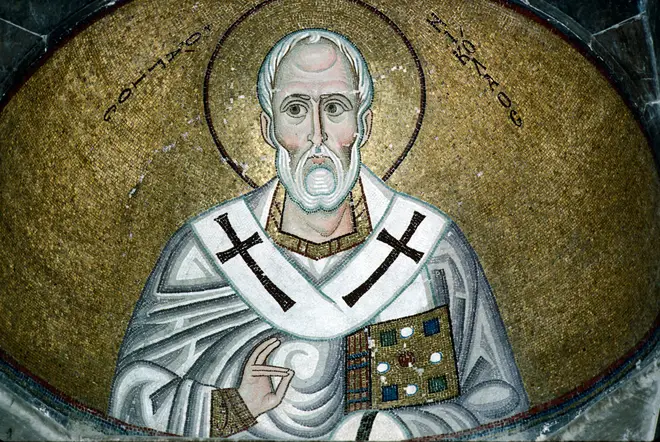On Air Now
Calm Classics with Myleene Klass 10pm - 1am
8 December 2021, 17:36

Move aside, ‘Santa Claus is Coming to Town’. This 12th-century song was the original Santa song.
Personent hodie is a famous medieval Christmas carol, first published in 1582.
It’s a very common carol heard in multiple choirs’ repertoire during the festive period, however, scholars have suggested that it is based on, or even a parody of, a 12th-century song called Intonent hodie voces ecclesiae.
Intonent hodie voces ecclesiae is a song written in the 1100s, which seems to address St Nicholas and would have been sung on the Saint’s Day, 6 December.
The first line says, ‘Make a thunderous noise from all the churches on this day of great joy’.
The song goes on to describe the stories of St Nicholas, on which our modern-day Santa Claus was based.
While most choirs choose to perform Personent hodie, Anonymous 4, a female a cappella quartet, recorded the work with the originally Intonent hodie lyrics for their CD, Legends of St. Nicholas – you can hear it below.
Read more: A dive into the surprising history of the Christmas carol

Hymn: Intonent hodie
The roots for the character of Santa Claus go all the way back to the 3rd-century monk, St Nicholas, the patron saint of children.
St Nicholas was born around 280AD in Myra, Turkey, and inspired many legends thanks to his kind and generous nature.
One of the most famous stories associated with St Nicholas, involves him gifting a father of three girls some money for a wedding dowry, so that the father does not have to sell the girls into slavery.
He gifts the money in the dead of night, so the father cannot see who is sending them money; thus, inspiring Santa Claus’ own penchant for nightly gift-giving.
On the eve of St Nicholas Day (6 December), children in Germany and other countries, leave a single shoe outside their door in the hopes that when they wake in the morning, there will be sweets left in the shoe from St Nicholas.

The name Santa Claus was derived from Sinter Klaas, a shortened form of Sint Nikolaas (the Dutch for Saint Nicholas).
As immigrants from European countries came to America at the end of the 1700s, they brought their traditions over, including those celebrating the gift-giving saint.
At the start of the 18th century, stories about Sinter Klaas were written into books, and slowly became a standard part of shops Christmas advertising campaigns.
Then in the 19th century, Santa started to go secular. The first Christmas song to feature Santa Claus was Up on the Housetop written in 1864, with lyrics by Benjamin Hanby. It is the second-oldest secular Christmas song, beaten by Jingle Bells by just seven years.
The original lyrics were as follows:
Up on the house, no delay, no pause
Clatter the steed of Santa Claus.
Down thro' the chimney with loads of toys
Ho for the little ones, Christmas joys.
In the modern lyrics, the song references the legendary gift-giver as both Santa Claus, and St Nick.
Just one year later, the lyrics to the Christmas song Jolly Old Saint Nicholas were published in an American children’s magazine. It is assumed the lyrics are also by Hanby. In this song, the singer details to Santa, what presents three children are hoping for this Christmas.

[OFFICIAL VIDEO] Up on The Housetop - Pentatonix (360 Version)
In a way – if we’re basing him on St Nick. Christmas songs date back even earlier, to the 2nd century, in the form of carols and hymns.
It is generally accepted that the first Christmas song ever to be written was ‘Angels Hymn’ in 129AD. Over the next few hundred years, Christianity-themed hymns started taking over from the previous pagan songs celebrating Winter Solstice which were usually sung at this time of year.